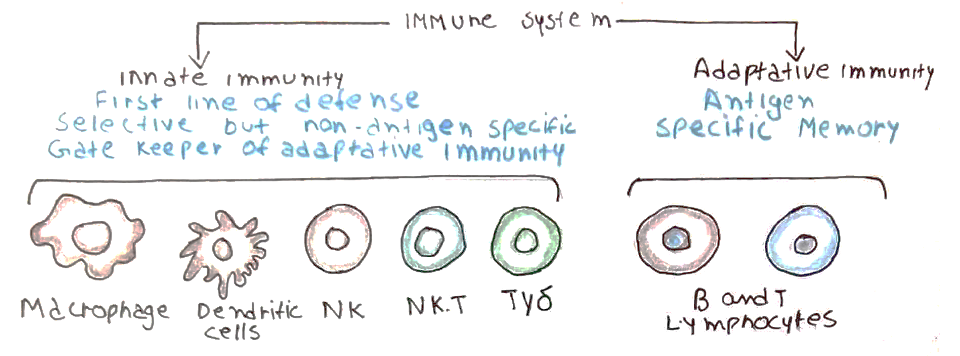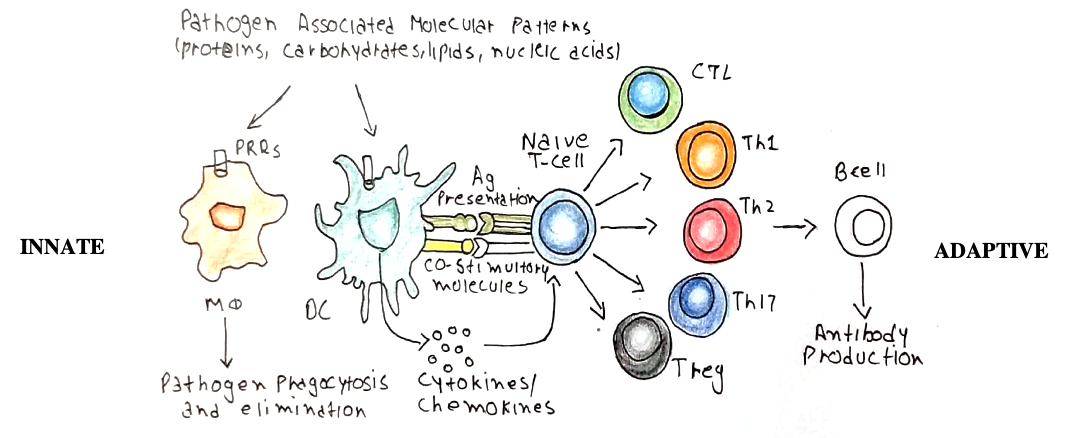The immune response can be split into the innate and adaptive system:
Innate Immunity
This is immunity which is dependent on antigen receptors that are germline encoded
The innate immune system recognizes 3 types of stimulants, which activate the innate response:
– Pathogen associated molecular patterns (PAMPs) – molecular shapes specific to the pathogen
– Danger associated molecular patterns (DAMPs) – self-molecules released by host stressed cells
– Missing-self – Infected cells do not show normal self-antigens which protect host cells from NK cells.
The activation of these receptors gives acute inflammation and activation of the following chemical cascades:
IL2 –> this is one of the most pro-inflammatory cytokines which gives fever and stimulates inflammation
TNFa –> This signals for increased inflammation and stimulates fever.
– Primes neutrophils, triggers platelet activation and increase vascular permeability.
Complement –> This is a series of proteins which start a catalytic cascade forming C3b and C3a
– They attach to pathogenic cells to promote local anaphylaxis and help opsonisation
– They also recruit C4, C5, C6, C7 to form the membrane attack complex to lyse pathogens

Adaptive Immunity
This is dependent on receptors that are created by the DNA of somatic cells
– The link between the innate and adaptive immune system is the macrophages and dendritic cells. These cell types are antigen presenting cells that engulf foreign pathogens, and present peptides on MHC molecules.
– They activate T helper cells which have complementary T cell receptors, which also needs co-stimulation:
CD28 on T cell –> B7 on APC
CD40L on T cell –> CD40 on APC
Once activated, these direct the immune response either towards antibody production or cell immunity.
– This depends on the type of pathogen and the type of T cell activated:
Th1 cells release IL-12, IFNY –> inflammatory cytotoxic response, stimulating macrophages to kill cells
– Important to fight against viruses and intracellular bacteria
Th2 cells release IL-10 –> anti-inflammatory, activates antibody response to parasites
– Important to fight against helminths and extracellular organisms




